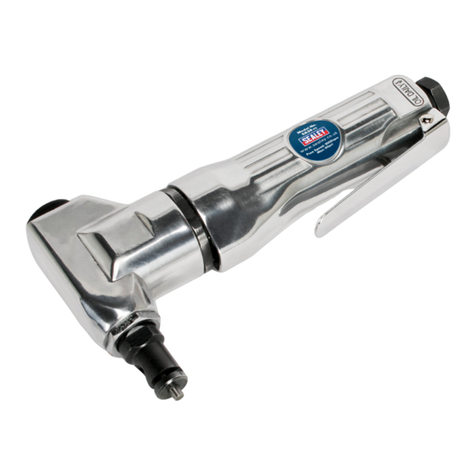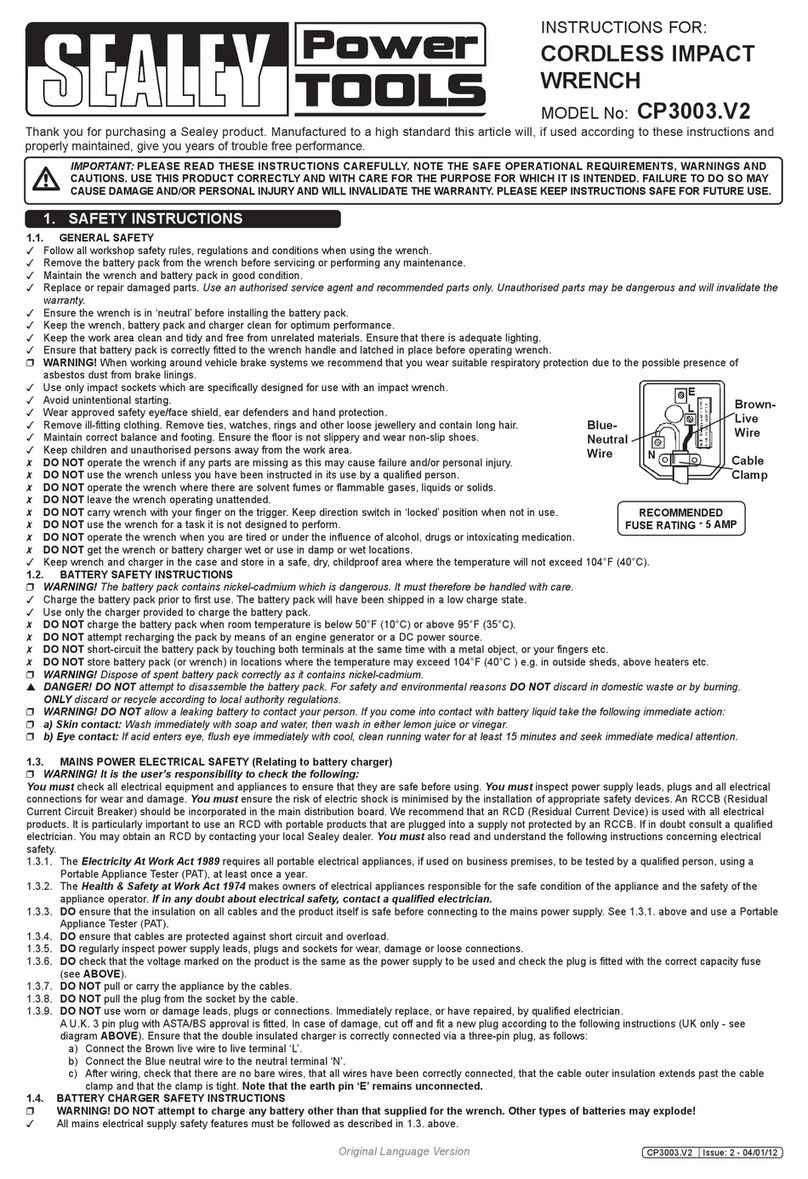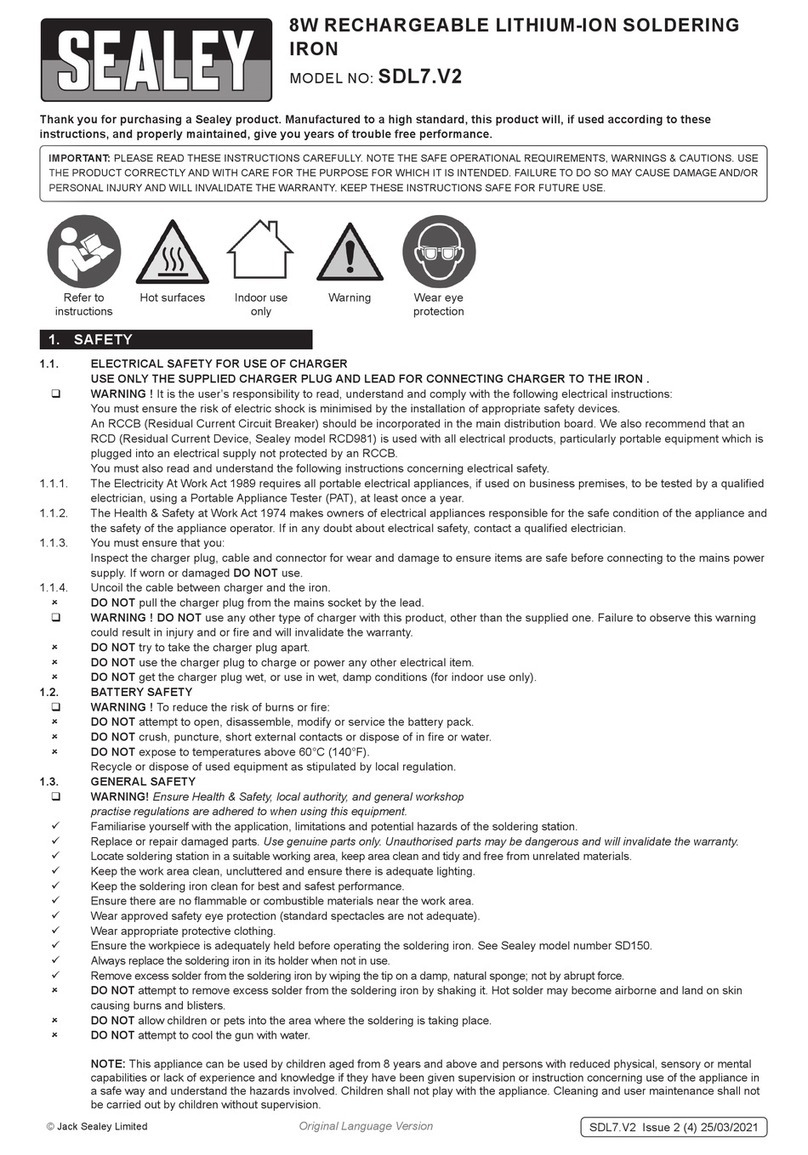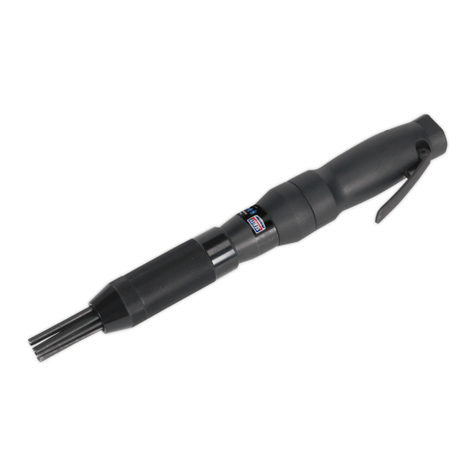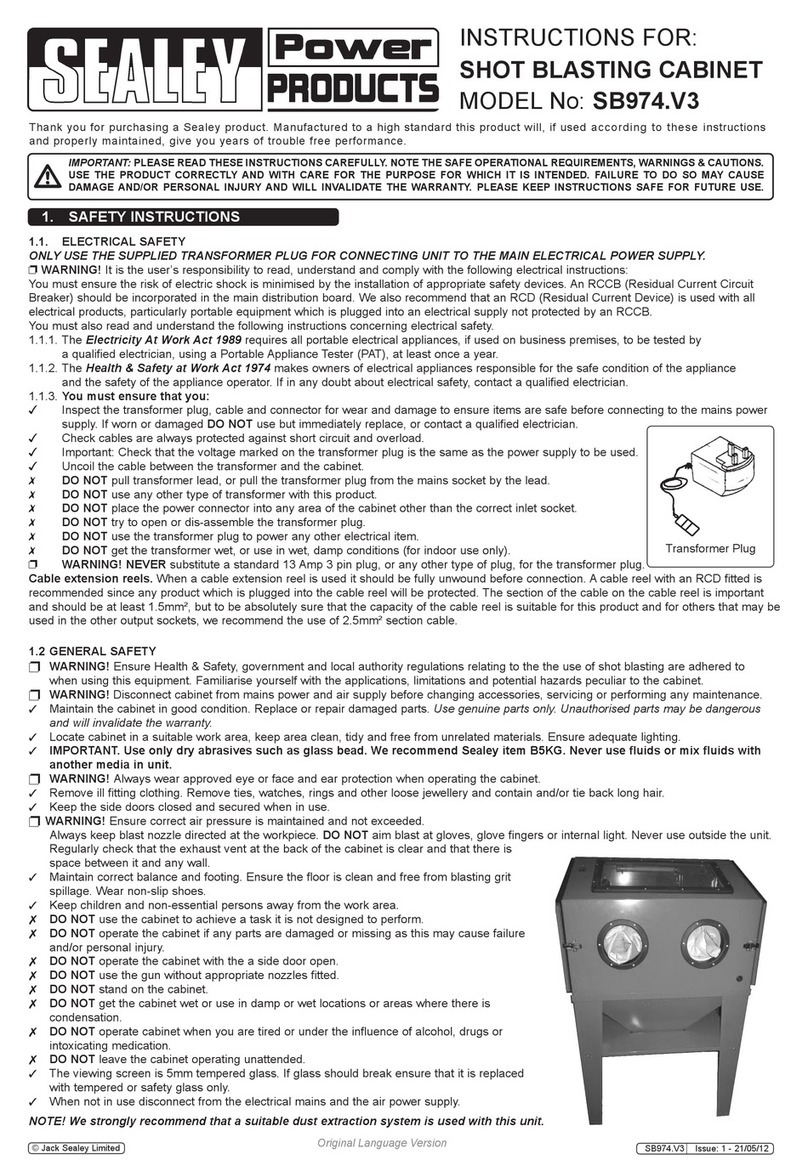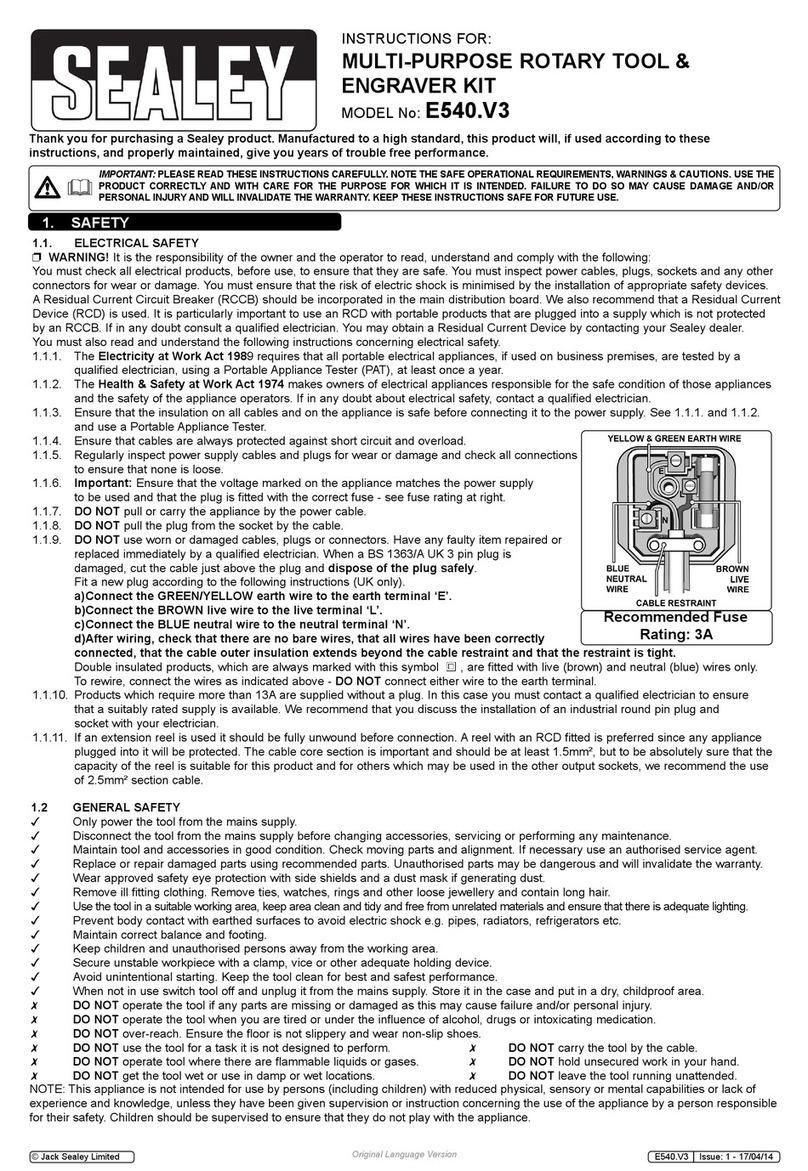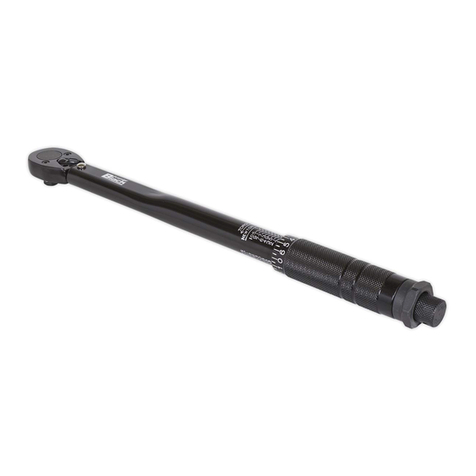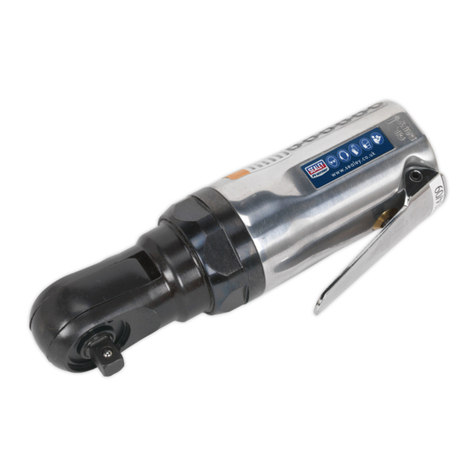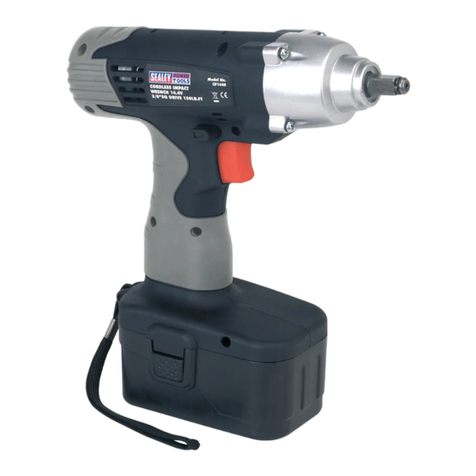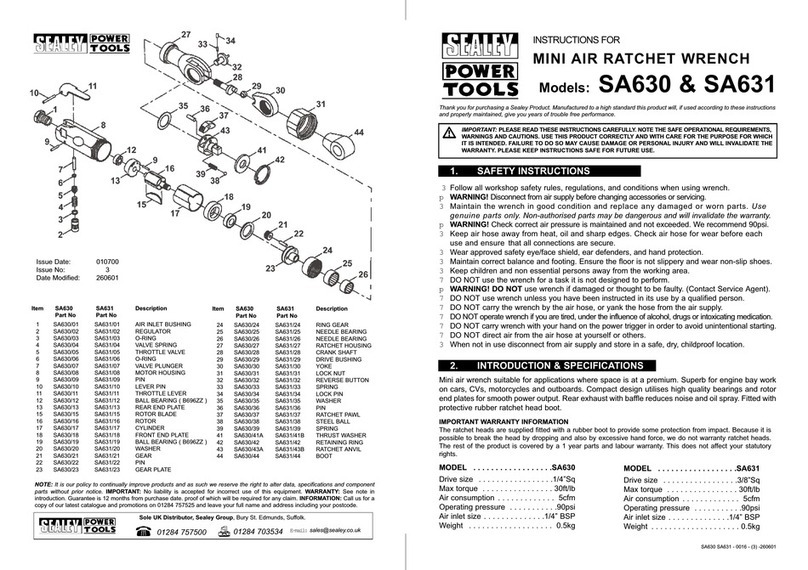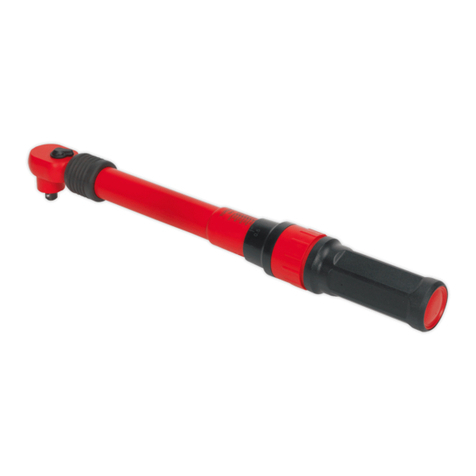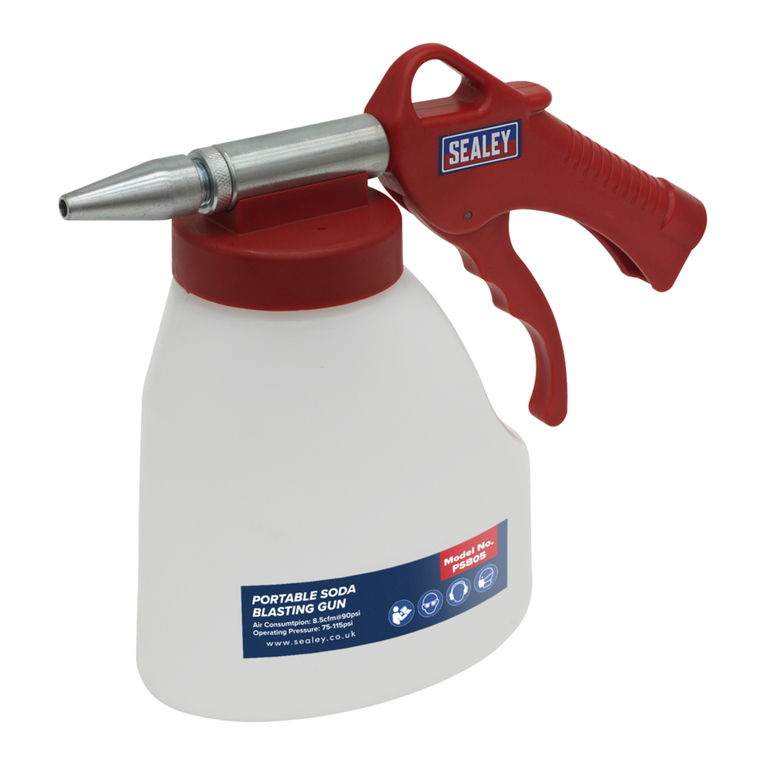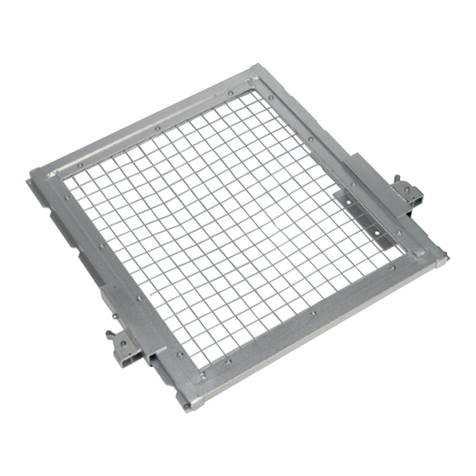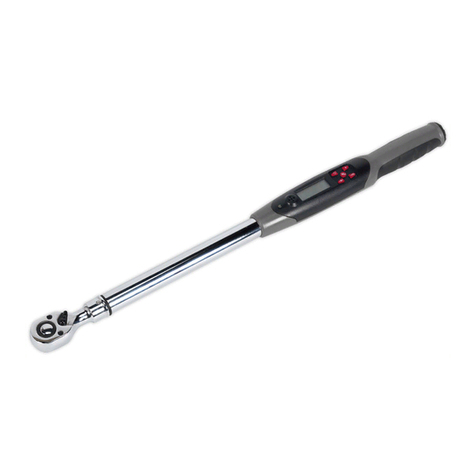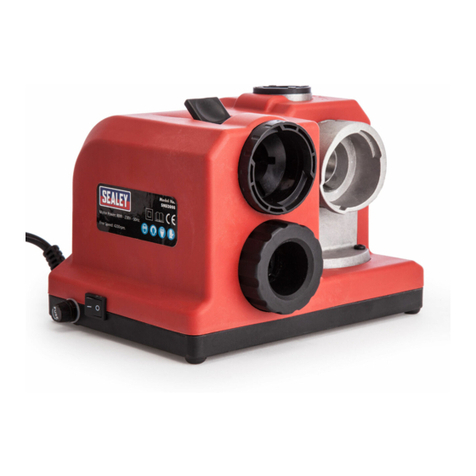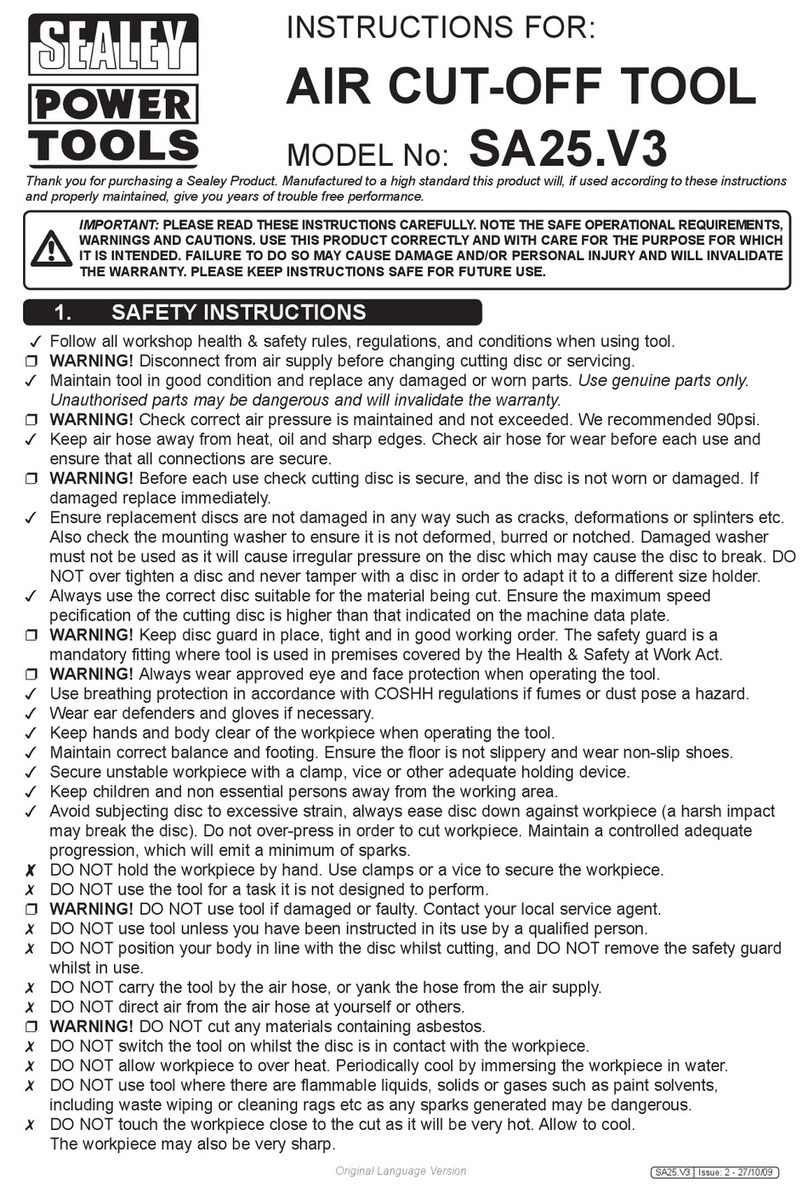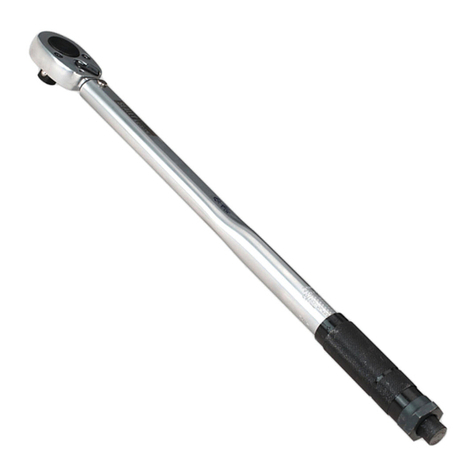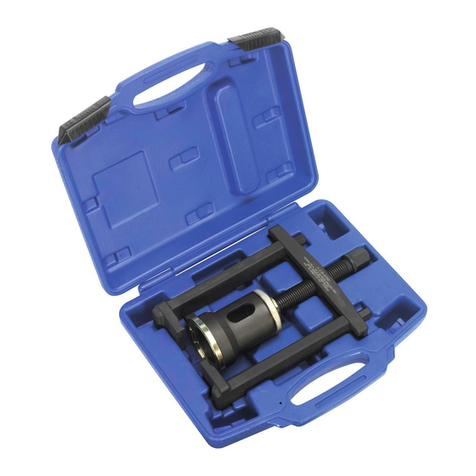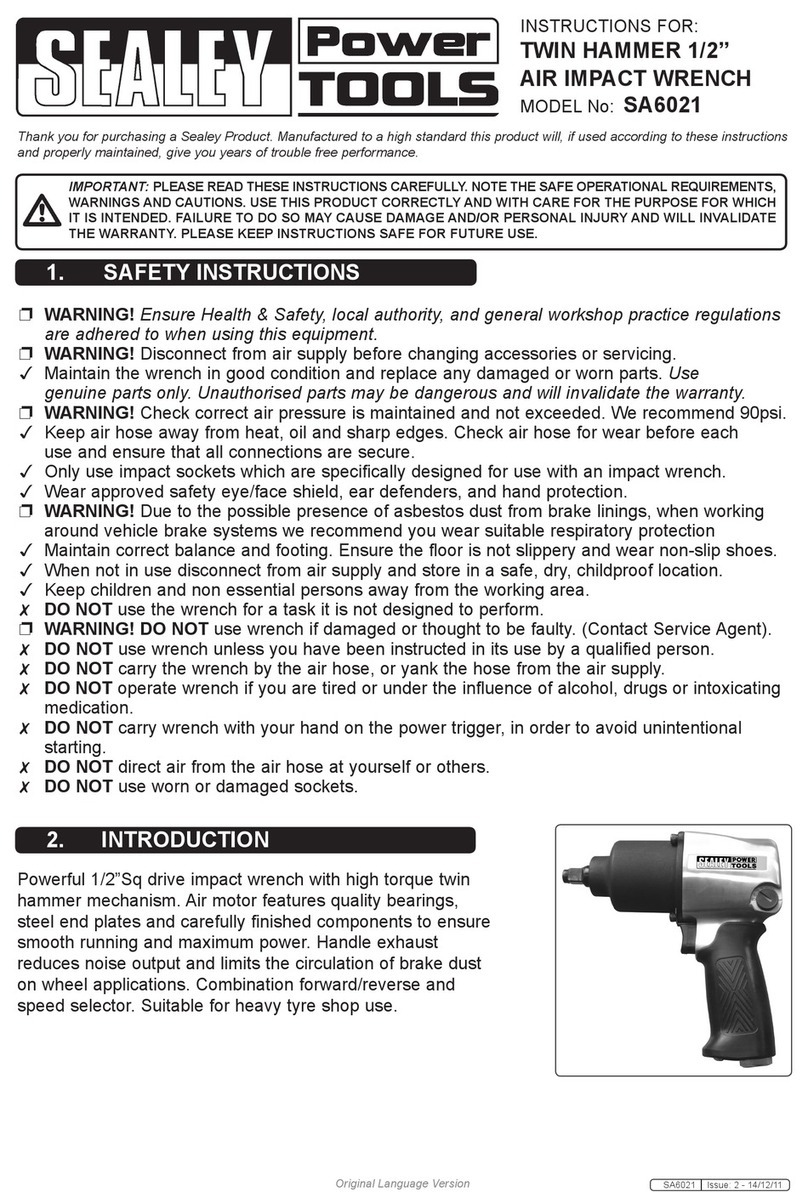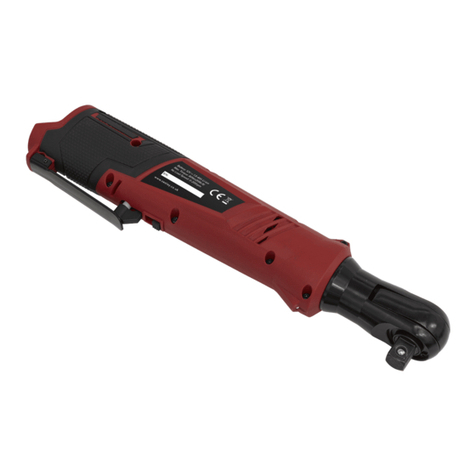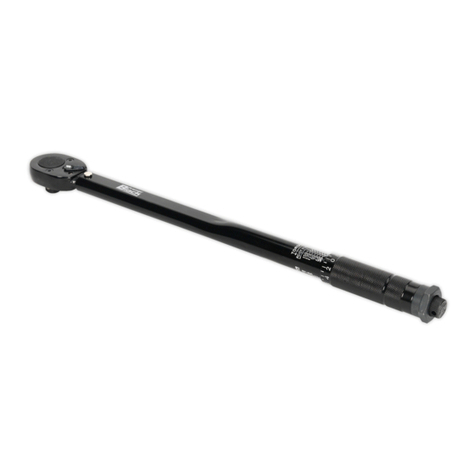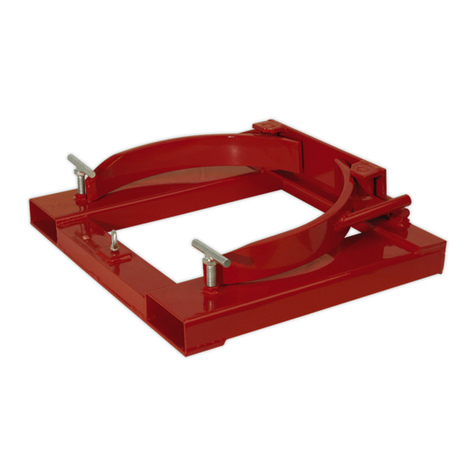
Original Language Version SA203 Issue:3(SP) - 18/06/13
© Jack Sealey Limited
WARNING! – Risk of Hand Arm Vibration Injury.
This tool may cause Hand Arm Vibration Syndrome if its use is not adequately managed.
This tool is subject to the vibration testing section of the Machinery Directive 2006/42/EC.
This tool is to be operated in accordance with these instructions.
This tool has been tested in accordance with: EN ISO 28927-2:2009 & BS EN ISO 15744:2008.
Declaration and verification of Vibration Emission figures are in accordance with EN 12096:1997
Measured vibration emission value (a): .....5.8m/s²
Uncertainty value (k):...................0.648m/s²
Please note that the application of the tool to a sole specialist task may produce a different average vibration
emission. We recommend that a specific evaluation of the vibration emission is conducted prior to commencing
with a specialist task.
A health and safety assessment by the user (or employer) will need to be carried out to determine the suitable
duration of use for each tool.
NB: Stated Vibration Emission values are type-test values and are intended to be typical.
Whilst in use, the actual value will vary considerably from and depend on many factors.
Such factors include; the operator, the task and the inserted tool or consumable.
NB: ensure that the length of leader hoses is sufficient to allow unrestricted use, as this also helps to reduce
vibration.
The state of maintenance of the tool itself is also an important factor, a poorly maintained tool will also increase
the risk of Hand Arm Vibration Syndrome.
CORRECT USE.
Vibration emission is closely linked to the operating pressure in the air supply. The user should ensure that the
pressure is set in accordance with our recommendations to assure optimum efficiency and minimise vibration
exposure.
• Keephandsawayfromsocketswheninuse.
•Donotuseill-ttingorwornSocketsandExtensionsasthiswillincreasevibration.
• Ensurethatthetooliscorrectlyalignedtothework.Misalignmentincreasestheriskofvibrationinjury.
• Ensurethatconsumablesareselected,maintainedandreplacedinaccordancewithSealeyInstructions.
• Sleevefittingsmustbeusedwherepossible.
• Alwayssupportthetoolinastandoronabalanceroratensiondevicewherepossible.
• Ensurethattheoperatorissufficientlyexperiencedinordertobeabletohandleandoperatethetoolcorrectly.
• Ensurethatthetoolisheldwithalightbutsecuregrip.Avoidexcessivegripforceasthiswillincreasetherisk
of vibration injury.
MAINTENANCE.
If the air system does not have an oiler, lubricate the air tool daily with a few drops of Sealey air tool oil dripped
into the air inlet. Clean the tool after use.
Loss of power or erratic action may be due to the following:
Excessive drain on the air line. Moisture or restriction in the air pipe. Incorrect size or type of hose connectors.
To remedy, check the air supply and follow instructions in the PREPARING FOR USE section..
Grit, residual deposits (gum) in the tool may also reduce performance.
Remove the strainer. Clean the strainer and flush the tool out with gum solvent oil or an equal mixture of SAE
No:10 oil and paraffin. Allow the tool and strainer to dry then lubricate before use.
For a full service, contact your local Sealey service agent.
When not in use, disconnect the tool from the air supply, clean the tool and store the tool in a safe, childproof,
location.
To reduce friction and increase the power and longevity of the tool; regularly lubricate the drive shaft and check
and top up the gearbox (if fitted).
Health surveillance.
We recommend a programme of health surveillance to detect early symptoms of vibration injury so that
management procedures can be modified accordingly.
Personal protective equipment.
We are not aware of any personal protective equipment (PPE) that provides protection against vibration injury
that may result from the uncontrolled use of this tool. We recommend a sufficient supply of clothing (including
gloves) to enable the operator to remain warm and dry and maintain good blood circulation in fingers etc. Please
note that the most effective protection is prevention, please refer to the Correct Use and Maintenance section in
these instructions. Guidance relating to the management of hand arm vibration can be found on the HSC
website www.hse.gov.uk - Hand-Arm Vibration at Work.
